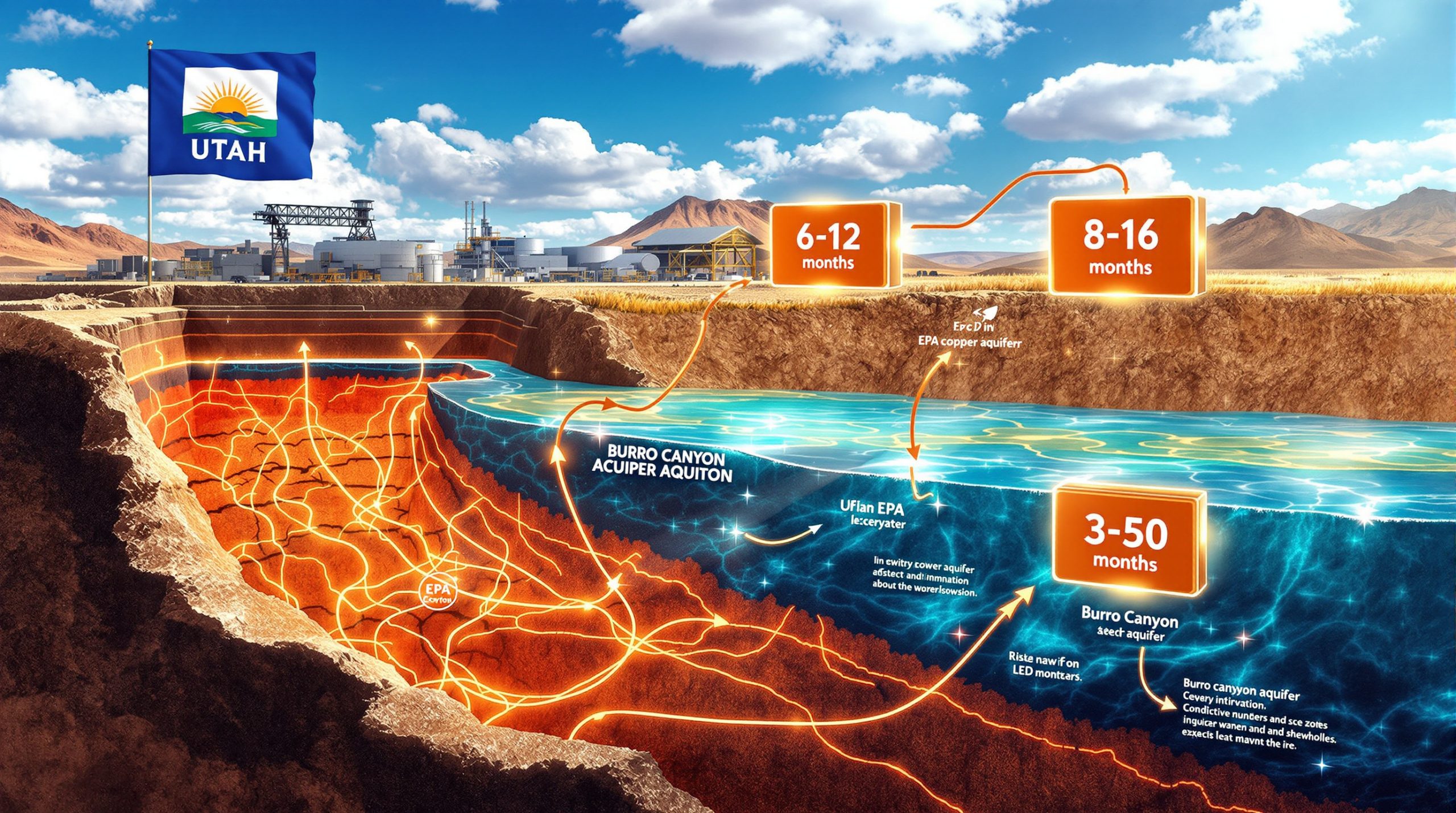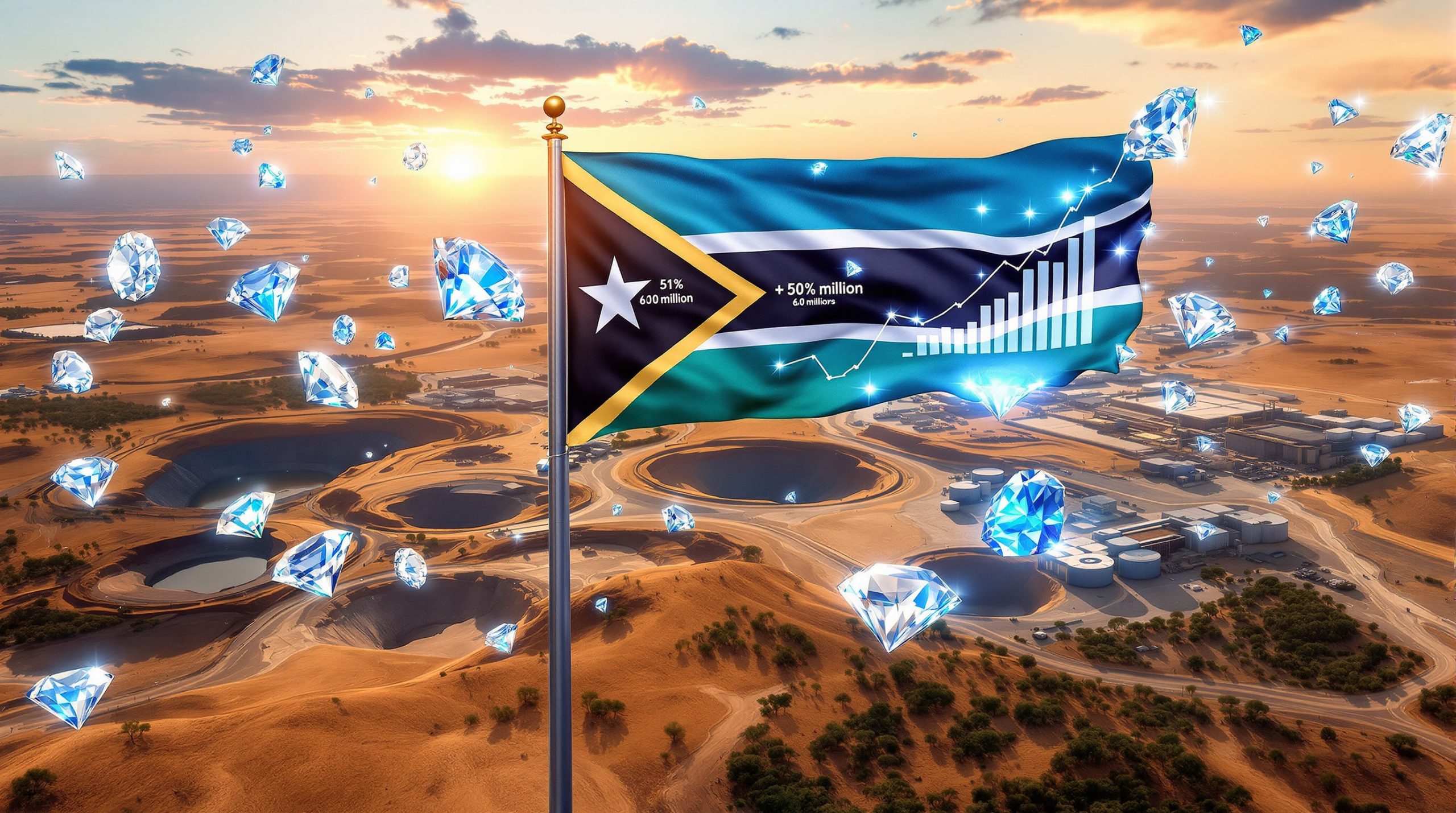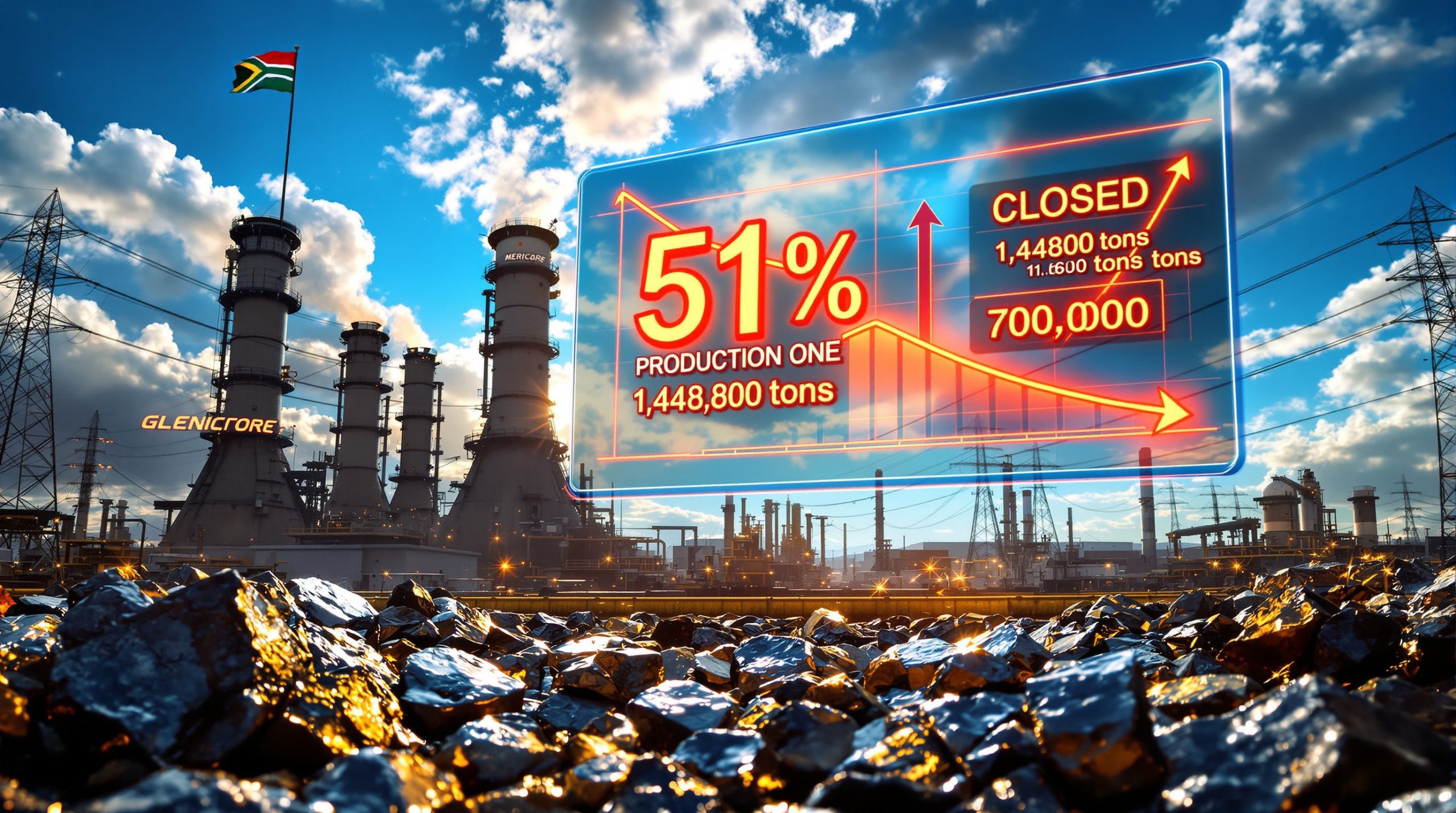What's Driving US-Brazil Rare Earth Partnership Discussions?
The strategic landscape for critical minerals energy transition is experiencing a fundamental shift as the United States actively seeks to diversify its rare earth supply chains. Recent US and Brazil rare earths discussions between US officials and Brazilian mining executives signal a pivotal moment in global resource politics, with both nations recognising the urgent need to establish alternative supply routes outside of traditional Asian dominance.
During a recent industry event in Salvador, Bahia, US Charge d'Affaires Gabriel Escobar conducted private meetings with Brazilian mining executives to discuss rare earth partnerships. These discussions, held on October 29, 2025, represent a significant diplomatic initiative as the United States works to reduce its dependence on Chinese-dominated supply chains that currently control approximately 90% of global rare earth processing capacity.
Understanding the Geopolitical Context
The current global rare earth market presents significant vulnerabilities for Western economies. With processing capacity heavily concentrated in East Asia, supply chain disruptions pose substantial risks to industries ranging from renewable energy to defence manufacturing. This concentration has prompted strategic planners to identify nations with both substantial reserves and political stability as potential partners.
The timing of these discussions coincides with broader trade negotiations between the US and Brazil aimed at removing tariffs imposed by President Donald Trump on Brazilian goods. These tariff negotiation effects, reaching up to 50% on certain products, have become intertwined with strategic mineral partnership discussions, creating opportunities for mutually beneficial agreements.
Brazil's Strategic Position in the Global Market
Brazil holds the world's second-largest known rare earth reserves, estimated at approximately 21 million tons. This positions the South American nation as a critical player in any diversification strategy. The country's established mining infrastructure and democratic governance structure make it an attractive partner for long-term supply agreements.
Despite possessing vast reserves, Brazil currently produces minimal quantities of rare earth elements. This gap between potential and production creates significant opportunities for international partnerships that could transform the nation into a major global supplier. Furthermore, industry analysts suggest that with proper investment and technology transfer, Brazil could capture a substantial portion of the growing global demand for these critical materials.
The geological characteristics of Brazilian rare earth deposits offer unique advantages. Unlike some deposits that contain primarily light rare earth elements, Brazil's reserves include significant quantities of heavy rare earth elements, which are particularly valuable for high-tech applications including wind turbines, electric vehicle motors, and advanced defence systems.
Which Brazilian Mining Assets Are Attracting International Attention?
Several key projects across Brazil have emerged as focal points for international investment and partnership discussions. The concentration of these assets in specific regions creates opportunities for integrated development approaches that could maximise economic benefits whilst ensuring supply security.
Minas Gerais: The Heart of Brazilian Rare Earth Potential
The state of Minas Gerais has become a central hub for rare earth exploration and development. Multiple projects in this region offer varying stages of development, from early-stage exploration to advanced feasibility studies. The geological characteristics of this area suggest significant potential for both light and heavy rare earth elements.
Australian mining company St. George Mining has established a notable presence in Minas Gerais with its rare earth project. The company's representatives participated in the recent meetings with US officials, indicating the international nature of potential partnerships. This project represents one of several advanced-stage developments that could serve as anchor assets for broader supply chain initiatives.
The mineral endowment of Minas Gerais extends beyond rare earths to include iron ore, lithium, and other critical minerals. Consequently, this diversification creates opportunities for integrated mining operations that could improve project economics whilst reducing operational risks through portfolio effects.
Infrastructure Development Opportunities
Key Insight: The development of rare earth projects requires substantial infrastructure investment, including processing facilities, transportation networks, and skilled workforce development.
Current discussions focus on creating integrated supply chains that could serve both domestic Brazilian markets and international export opportunities. This approach would maximise the economic benefits whilst ensuring supply security for partner nations. However, the infrastructure requirements include specialised processing facilities capable of separating and refining individual rare earth elements to specifications required by end-users.
Transportation infrastructure represents another critical component of successful rare earth development. The bulk nature of rare earth concentrates requires efficient logistics networks connecting mining operations to processing facilities and export terminals. In addition, Brazil's existing port infrastructure provides advantages for international shipments, though inland transportation networks may require upgrades to support large-scale operations.
What Role Do Trade Negotiations Play in These Discussions?
The intersection of rare earth cooperation with broader trade policy creates complex negotiation dynamics. Current tariff structures have become intertwined with discussions about strategic mineral partnerships, creating opportunities for comprehensive agreements that address both economic and security concerns.
Tariff Removal as a Strategic Lever
Brazilian negotiators have positioned their rare earth resources as a significant bargaining chip in trade discussions. This strategy recognises the strategic value of these materials to US manufacturing and defence sectors, potentially creating win-win scenarios for both economies. For instance, the removal of existing tariffs could significantly improve the economics of Brazilian rare earth projects whilst providing the United States with secure access to critical materials.
The Brazilian mining lobby group Ibram has played an active role in facilitating discussions between international partners and local operators. Ibram director Julio Nery confirmed that US officials have met with industry representatives multiple times, including requests for meetings with Ibram president Raul Jungmann. These institutional relationships provide frameworks for ongoing dialogue and partnership development.
Timeline and Implementation Challenges
| Negotiation Phase | Expected Timeframe | Key Milestones |
|---|---|---|
| Initial Agreements | 6-12 months | Framework establishment |
| Regulatory Approval | 12-18 months | Environmental and mining permits |
| Infrastructure Development | 2-5 years | Processing facilities and logistics |
| Full Production Capacity | 5-10 years | Commercial-scale operations |
The complexity of rare earth development extends beyond simple extraction operations. Unlike many mineral commodities, rare earths require sophisticated processing to separate individual elements and achieve the purity levels demanded by end-users. Consequently, this processing complexity creates both challenges and opportunities for partnership arrangements.
How Could US-Brazil Partnerships Transform Processing Capabilities?
The development of rare earth processing capabilities represents one of the most significant opportunities in the US and Brazil rare earths discussions. Currently, raw materials often require processing in facilities thousands of miles away, creating both cost and security vulnerabilities that integrated partnerships could address.
Domestic Processing Development
Establishing processing facilities within Brazil or through joint ventures could dramatically alter global supply chain dynamics. These facilities would need to meet international environmental standards whilst achieving competitive cost structures. However, the technical requirements for rare earth processing include specialised equipment for magnetic separation, flotation, acid leaching, and solvent extraction processes.
Brazilian processing development could focus on different stages of the rare earth value chain. Initial facilities might concentrate on producing mixed rare earth concentrates, whilst more advanced operations could target separated individual elements or even finished products for specific applications. This staged approach allows for gradual capability building whilst generating revenue streams to support further investment.
Technology Transfer and Knowledge Sharing
Successful partnerships would likely involve significant technology transfer arrangements, allowing Brazilian operations to access advanced processing techniques whilst US companies gain access to reliable raw material supplies. These arrangements typically involve licensing agreements, joint ventures, or direct foreign investment that brings both capital and expertise to Brazilian operations.
Furthermore, the knowledge transfer aspects extend beyond processing technology to include environmental management, safety protocols, and quality control systems. International partnerships often introduce best practices that elevate local operations to global standards whilst ensuring sustainable development approaches.
What Are the Environmental and Sustainability Considerations?
Modern mine planning and processing operations must address significant environmental challenges. Both US and Brazilian stakeholders recognise that sustainable practices are essential for long-term partnership success, particularly given increased scrutiny of mining operations' environmental impacts.
Environmental Standards Alignment
Important Consideration: Any large-scale rare earth development must incorporate advanced environmental protection measures, including water treatment, waste management, and ecosystem restoration.
The alignment of environmental standards between partner nations ensures that operations meet international best practices whilst maintaining social licence to operate within local communities. Rare earth processing generates various waste streams, including radioactive materials that require specialised handling and disposal procedures.
Brazilian environmental regulations have evolved significantly in recent years, incorporating lessons learnt from both domestic and international mining experiences. The integration of advanced environmental management systems from the project development stage can prevent many potential issues whilst ensuring compliance with evolving regulatory requirements.
Community Engagement and Social Impact
Successful projects require comprehensive community engagement strategies that address local concerns whilst maximising economic benefits for affected regions. This includes job creation, skills development, and infrastructure improvements that extend beyond mining operations.
In addition, the social impact considerations encompass direct employment opportunities, local supplier development, and community investment programs. Large-scale rare earth projects can generate thousands of jobs during construction phases and hundreds of permanent positions during operations, creating significant regional economic impacts.
Which Companies and Stakeholders Are Involved?
The complexity of rare earth supply chain development requires collaboration among multiple stakeholder groups, including mining companies, processing specialists, technology firms, and government agencies. The recent diplomatic meetings indicate the high-level attention these partnerships are receiving from both governments.
Australian Mining Companies in Brazil
Several Australian mining companies have established significant presences in Brazilian rare earth projects, bringing international expertise to local operations. These companies often serve as bridges between Brazilian resources and international markets, leveraging their experience in similar projects worldwide.
The involvement of Australian companies reflects the global nature of rare earth development, where successful projects often combine resources from multiple jurisdictions. Australian firms bring particular expertise in hard rock rare earth mining and processing, complementing Brazilian geological knowledge and US market access.
Industry Association Participation
Brazilian mining lobby groups have played active roles in facilitating discussions between international partners and local operators. These organisations help navigate regulatory requirements whilst advocating for policies that support sector development.
However, industry associations provide valuable functions including information sharing, regulatory advocacy, and standard setting. Their participation in international discussions helps ensure that policy frameworks support sustainable development whilst addressing the concerns of all stakeholders.
What Are the Technical Challenges in Rare Earth Development?
The technical complexity of rare earth extraction and processing creates significant barriers to entry for new operations. Understanding these challenges is crucial for assessing the feasibility of proposed partnerships and the realistic timelines for project development.
Geological Complexity and Resource Characterisation
| Challenge Category | Technical Requirements | Timeline Impact |
|---|---|---|
| Resource Definition | Extensive drilling and sampling | 2-3 years |
| Metallurgical Testing | Process optimisation | 1-2 years |
| Environmental Assessment | Impact studies and mitigation | 1-3 years |
| Engineering Design | Facility planning and design | 1-2 years |
Rare earth deposits present unique geological challenges that differ significantly from conventional mineral deposits. The elements typically occur in complex mineral associations that require sophisticated separation techniques. Brazilian deposits often contain monazite and xenotime minerals, which require different processing approaches than the bastnasite deposits common in other regions.
Processing Technology Requirements
Rare earth processing requires specialised equipment and expertise that may not be readily available in all markets. Developing this capability often requires significant capital investment and technology partnerships with established operators or equipment suppliers.
The processing sequence typically includes multiple stages: crushing and grinding, flotation concentration, roasting and acid leaching, solvent extraction purification, and final product precipitation. Each stage requires specific equipment and operating parameters optimised for the particular ore characteristics and target product specifications.
How Do These Discussions Impact Global Supply Chain Security?
The strategic implications of US and Brazil rare earths discussions extend far beyond bilateral trade relationships. These developments could fundamentally alter global supply chain dynamics for critical materials, with consequences for industries, governments, and consumers worldwide.
Reducing Single-Point-of-Failure Risks
Diversifying supply sources reduces the vulnerability of critical supply chains to geopolitical disruptions or natural disasters. This resilience is particularly important for industries supporting national security and economic competitiveness, where supply interruptions could have cascading effects across multiple sectors.
The current concentration of rare earth processing capacity creates systemic risks that affect global technology supply chains. Alternative processing capabilities in different geographic regions would provide buffers against potential disruptions whilst encouraging competitive dynamics that benefit end-users.
Creating Competitive Market Dynamics
Increased supply diversity typically leads to more competitive pricing and improved service levels across global markets. This benefits end-users whilst encouraging innovation in processing and application technologies that can drive down costs and improve performance.
Furthermore, market competition also drives improvements in environmental and social performance as suppliers compete not only on price and quality but also on sustainability metrics increasingly important to end-users and investors.
What Are the Economic Implications for Both Nations?
The economic impact of successful rare earth partnerships could be substantial for both the United States and Brazil, creating jobs, generating export revenues, and supporting industrial development across multiple sectors.
Job Creation and Skills Development
Large-scale mining and processing operations create employment opportunities across multiple skill levels, from entry-level positions to highly specialised technical roles. These projects often catalyse broader economic development in their regions through multiplier effects that benefit local suppliers and service providers.
The skills development aspects extend beyond direct employment to include training programs, educational partnerships, and technology transfer that build long-term capabilities within Brazilian institutions. These capacity-building initiatives create lasting economic benefits that extend well beyond individual project lifecycles.
Export Revenue Potential
For Brazil, rare earth exports could become a significant source of foreign currency earnings, supporting broader economic development goals whilst reducing dependence on traditional commodity exports. The high value-to-weight ratio of processed rare earth products creates attractive export opportunities that can justify substantial infrastructure investments.
However, the revenue potential depends heavily on the degree of value addition achieved within Brazil. Raw concentrates generate modest revenue streams, whilst separated rare earth oxides or finished products command significantly higher prices that can transform regional economies.
What Challenges Must Be Overcome for Success?
Despite the significant opportunities, several challenges must be addressed to ensure successful implementation of US-Brazil rare earth partnerships. These obstacles range from technical and regulatory issues to financial and logistical considerations that require careful planning and coordination.
Regulatory and Permitting Complexity
The regulatory environment for mining operations involves multiple government levels and agencies, each with specific requirements and timelines. Navigating this complexity requires experienced legal and regulatory expertise, particularly for foreign investors unfamiliar with Brazilian administrative procedures.
Environmental permitting represents one of the most complex aspects of project approval, requiring comprehensive impact assessments, mitigation planning, and ongoing monitoring programs. The radioactive nature of some rare earth minerals adds additional regulatory layers that must be addressed throughout project development and operations.
Capital Requirements and Financing
Rare earth projects typically require substantial upfront capital investment before generating revenue. Securing appropriate financing arrangements often involves multiple funding sources and complex risk-sharing agreements that reflect the long development timelines and technical uncertainties inherent in these projects.
| Financing Stage | Capital Requirements | Risk Factors |
|---|---|---|
| Exploration | $5-20 million | Geological uncertainty |
| Feasibility Studies | $20-50 million | Technical and economic risks |
| Construction | $500-2000 million | Execution and market risks |
| Working Capital | $50-200 million | Operational and commodity price risks |
The financing complexity is compounded by the specialised nature of rare earth operations, which limits the pool of investors with relevant experience and risk appetite. International partnerships can help address these financing challenges by bringing together complementary resources and expertise.
Looking Forward: Timeline and Next Steps
The development of meaningful US and Brazil rare earths discussions will likely unfold over several years, with multiple phases of negotiation, development, and implementation. Success will require sustained commitment from both governments and private sector participants.
Short-term Milestones (1-2 years)
Initial agreements and framework development will establish the foundation for longer-term cooperation. This phase focuses on identifying specific projects and partnership structures whilst addressing regulatory and trade policy barriers that could impede progress.
The immediate priorities include finalising trade agreements that remove tariff barriers, establishing regulatory frameworks that support international investment, and identifying anchor projects that can serve as demonstration cases for broader cooperation. Moreover, the influence of Trump's critical minerals order may accelerate these discussions.
Medium-term Development (3-5 years)
Infrastructure development and facility construction represent the most capital-intensive phase of partnership implementation. Success during this period determines the ultimate viability of the cooperation, requiring sustained political support and continued private sector investment.
This phase will likely see the construction of initial processing facilities, the development of logistics infrastructure, and the establishment of supply agreements that provide revenue certainty for project developers whilst ensuring reliable supplies for end-users. Furthermore, considerations of a strategic minerals reserve may influence partnership structures.
Long-term Operations (5+ years)
Commercial operations and ongoing partnership management will determine the lasting success of these strategic relationships. The operational phase requires continued attention to environmental performance, community relations, and market development that sustains the economic viability of these investments.
Disclaimer: This analysis is based on publicly available information and current market conditions. Future developments in US-Brazil rare earth partnerships will depend on numerous factors including regulatory approvals, market conditions, and political developments that cannot be predicted with certainty. Investors should conduct their own due diligence and consult qualified advisors before making investment decisions related to rare earth projects or companies.
Further Exploration: Readers interested in learning more about global rare earth supply chains and US-Brazil diplomatic developments can explore additional perspectives through various industry publications and diplomatic sources that cover critical minerals policy and international trade developments.
Want to Capitalise on Critical Minerals Discoveries Before the Market Reacts?
Discovery Alert's proprietary Discovery IQ model provides instant notifications on significant ASX mineral discoveries, empowering investors to identify opportunities in critical minerals sectors including rare earths and battery metals ahead of broader market movements. Explore how major mineral discoveries have generated exceptional returns by visiting Discovery Alert's discoveries page and begin your 30-day free trial today to position yourself at the forefront of Australia's critical minerals boom.




